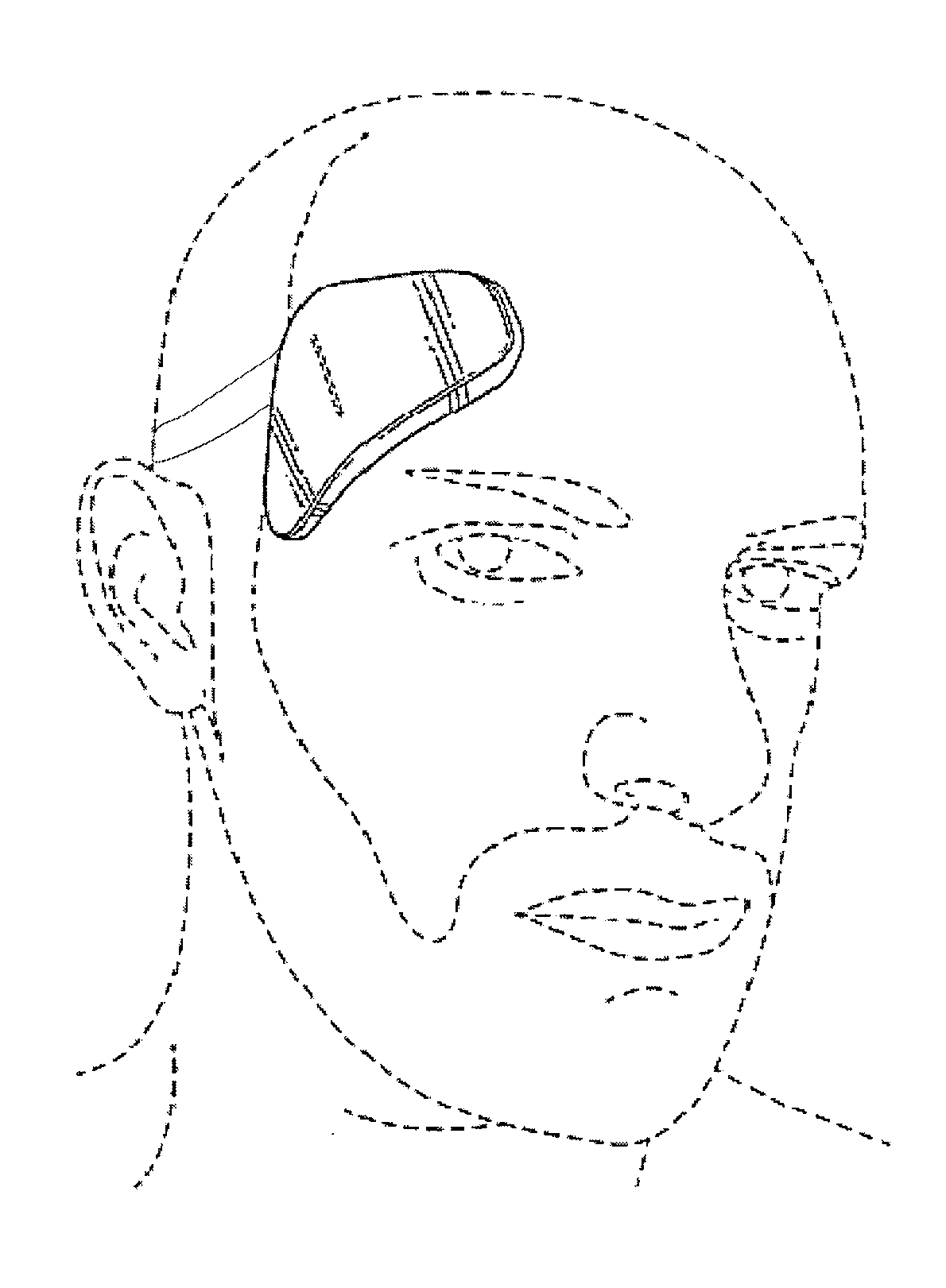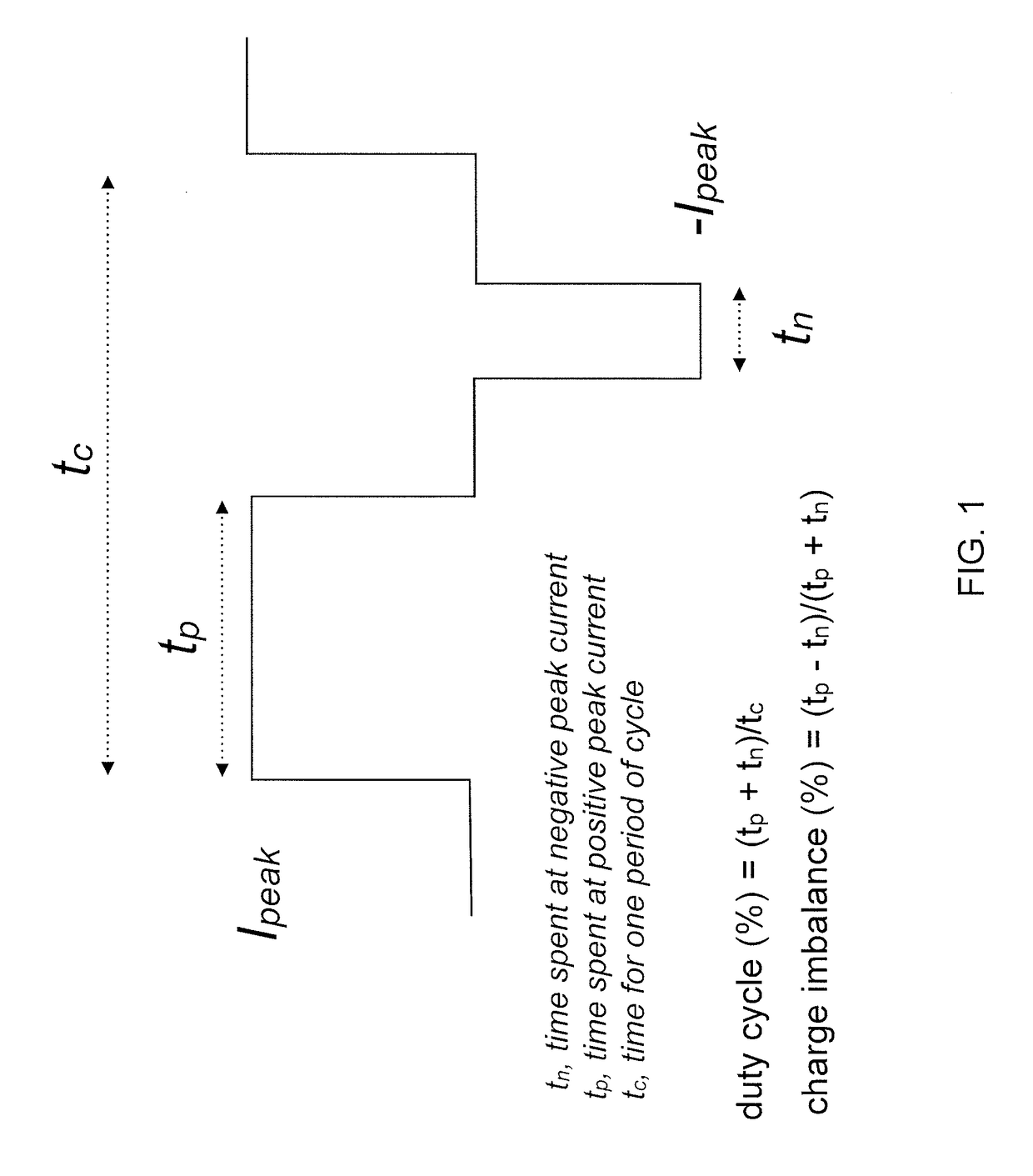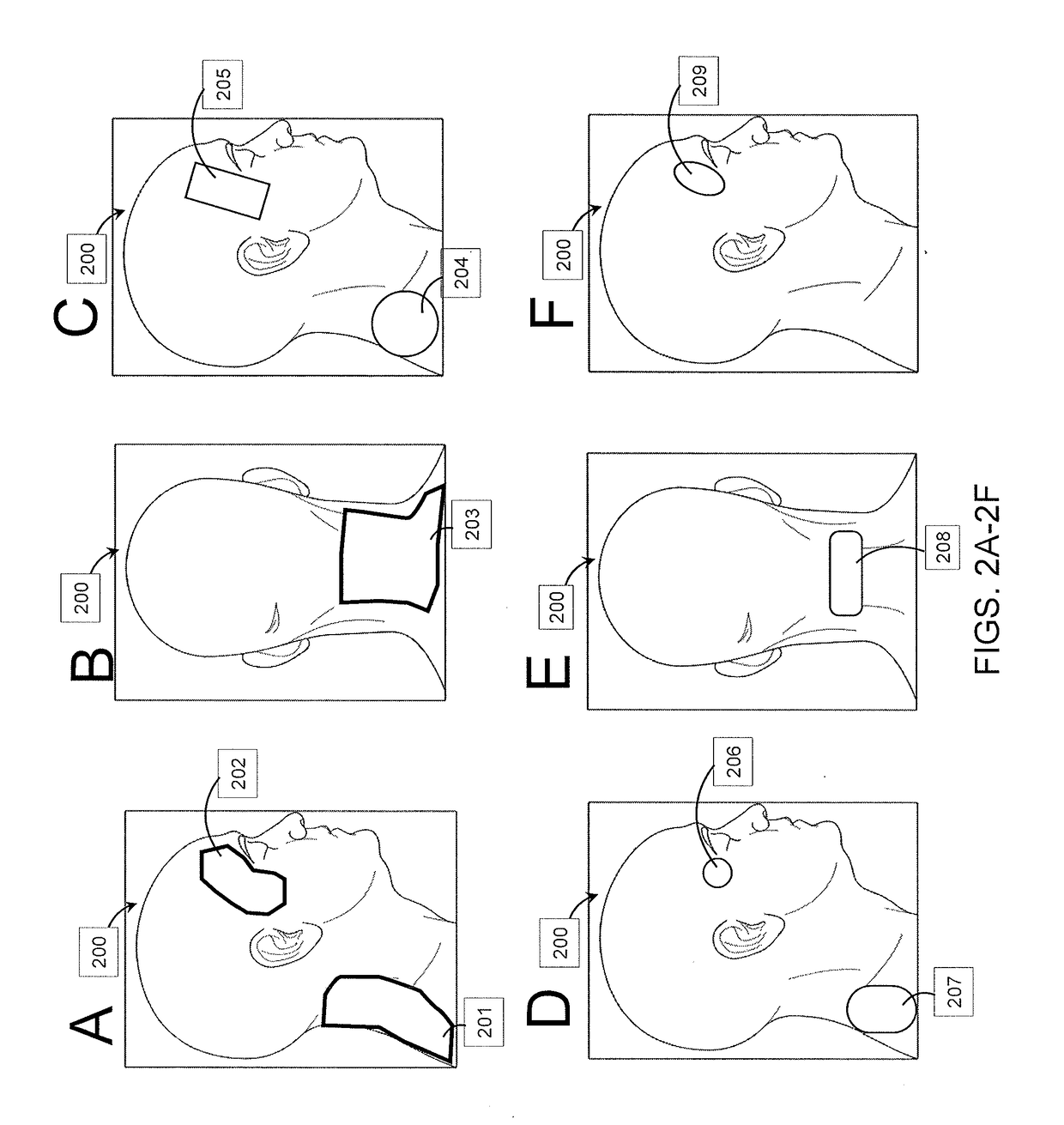Systems and methods for transdermal electrical stimulation to improve sleep
a technology of electrical stimulation and transdermal electrodes, which is applied in the direction of artificial respiration, diagnostic recording/measuring, therapy, etc., can solve the problems of reduced quality of life, high cost of agents, and associated risk of overdose, so as to reduce the time to fall asleep, improve sleep, and reduce the effect of sleep ons
- Summary
- Abstract
- Description
- Claims
- Application Information
AI Technical Summary
Benefits of technology
Problems solved by technology
Method used
Image
Examples
examples
[0152]As mentioned above, in general the use of certain TES waveforms applied prior to sleeping may improve the quantity and / or quality of sleep. In the morning, users typically wake up feeling more rested, with a more positive mood, less anxiety, and less stress (both as self-reported and as assessed by biochemical assay of saliva). FIGS. 9-14B illustrate exemplary data comparing various TES waveform that may be used to enhance sleep, including comparing to a control (“baseline”) stimulation in which only sham TES was applied.
[0153]For example, FIG. 9 illustrates an example of an overall assessment of the effect of two exemplary TES waveforms within a range of parameter values found to enhance sleep, compared to baseline. Comparison is made using the Pittsburgh Sleep Quality Index (PSQI). In this example, the assessments compared, in a 1-week crossover design with no washout period, baseline (no TES before sleep) and two different 15-minute TES waveforms delivered through a configu...
example
[0168]As discussed above, described herein are methods and apparatuses for noninvasive neuromodulation, and more specifically to configurations and methods for transdermal electrical stimulation systems adapted to improve sleep and mood. This has been shown experimentally as will be described below.
[0169]Achieving optimal human performance that involves cognitive or physical work requires quality sleep and a positive mental attitude. The ascending reticular activating system (RAS) represents a powerful set of endogenous neuromodulatory circuits that gate and tune global brain responses to internal and external cues, thereby regulating consciousness, alertness, and attention. The activity of two major RAS nuclei, the locus coeruleus (LC) and pedunculopontine nucleus (PPN), can be altered by trigeminal nerve modulation. Monosynaptic afferent inputs from the sensory components of trigeminal nerve branches project to the trigeminal sensory nuclear complex (TSNC), which has direct and po...
PUM
 Login to View More
Login to View More Abstract
Description
Claims
Application Information
 Login to View More
Login to View More - R&D
- Intellectual Property
- Life Sciences
- Materials
- Tech Scout
- Unparalleled Data Quality
- Higher Quality Content
- 60% Fewer Hallucinations
Browse by: Latest US Patents, China's latest patents, Technical Efficacy Thesaurus, Application Domain, Technology Topic, Popular Technical Reports.
© 2025 PatSnap. All rights reserved.Legal|Privacy policy|Modern Slavery Act Transparency Statement|Sitemap|About US| Contact US: help@patsnap.com



